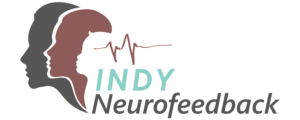How to tame inflammation – the cause of so many health issues

Inflammation is a contributing factor in many serious health conditions that affect both body and your brain.
Of course, not all inflammation is bad. Healthy bodies react to injuries with acute inflammation to speed circulation and bring healing nutrients to the affected site.
But when inflammation becomes chronic, that formerly helpful inflammatory response works against health and well-being. Chronic inflammation is largely due to lifestyle habits that welcome free radicals and the cellular damage they cause.
Here are 5 highly effective ways to control — and begin to reverse — chronic inflammation:
- Know which foods are inflammation-causing and eliminate them from your diet:
- Sugar
- Soda
- Deli and processed meats
- Fried and fast foods
- Omega-6 oils
- Refined wheat products
- Add inflammation-taming foods instead:
- Berries
- Fatty fish
- Cruciferous vegetables
- Whole grains
- Green tea
- Consult with your doctor about taking supplements, including:
- Astaxanthin
- Curcumin (turmeric)
- Omega-3 fatty acids
- Probiotics
- Make good sleep a priority every night. Allow for 7-9 hours of restorative sleep each night. Turn off electronics, block external lights, and keep your schedule even on weekends.
- Manage your stress, which floods your bloodstream with chemicals that increase inflammation. Make reducing stress and (often accompanying) negative feelings another top priority. Belly breathing, meditation, and regular exercise work well to help your mind and body release stress.
The team at INDY Neurofeedback reminds you that taming inflammation and stress should always be a part of your health routine. When you start eating healthier and dealing actively with stress, your body releases “feel good” chemicals in response to positive thoughts and emotions. That’s why it’s so important to practice techniques that help manage your emotions and stress.
INDY Neurofeedback has well researched tools to help you create a more positive and healthy environment for your brain body connection. What can we help you with?



 Yes, high blood pressure and brain health are closely related, especially as we age. Here’s why:
Yes, high blood pressure and brain health are closely related, especially as we age. Here’s why: